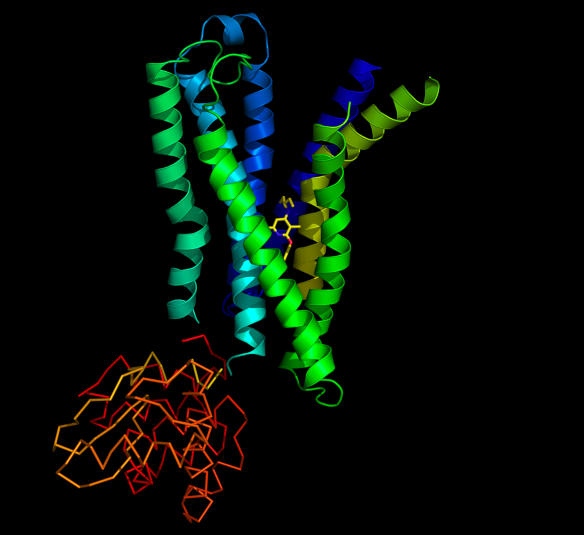Feeling Stressed? Understanding Anxiety and Depression
Understanding how proteins 'talk' to each other in the brain at the molecular level has been a long-standing puzzle for mental health research. This post will discuss the structure of a receptor in the brain responsible for our stress response.
What is it?
This is the structure of the corticotropin releasing factor (CRF) hormone receptor. CRF binds to the receptor and the signal is transmitted inside the cell, culminating in the release of other hormones that have numerous effects on the body from cardiovascular effects to glucose regulation. Continual activation of this receptor can cause increased feelings of anxiety, and increased levels of CRF are associated with Alzheimer's disease and major depression. Because the activation of this receptor is key for the stress response the CRF1 receptor has become a key drug target for treating anxiety and depression.
What does it look like?
The CRF receptor structure (http://www.rcsb.org/pdb/explore/explore.do?structureId=4k5y) is typical of a G protein coupled receptor, i.e. it has seven transmembrane-spanning helices. The receptor was solved in complex with an antagonist (yellow) (i.e. a drug to block the receptor) that was bound in a deep pocket in the receptor, a position that surprised researchers. This structure will pave the way for developing new drugs to target this important receptor.

Image generated by Pymol (http://www.pymol.org/)
Where did the structure come from?
The structure was solved in 2013 by Hollestein et al. (http://www.nature.com/nature/journal/v499/n7459/full/nature12357.html). Researchers had to introduce a total of twelve mutations into the receptor to help to stabilise the protein, as well as introduce a fusion protein (T4 lysozyme) into the third intracellular loop (shown as a ribbon in the above picture).
What we don’t know?
These types of receptors (also known as the Family B type of GPCRs) have an extra part, a second domain that sits on top of the seven transmembrane helices, that was not shown in the structure. This second domain is responsible for capturing the hormone ligand and delivering it to the receptor. How this domain sits on top of the receptor and interacts with the transmembrane regions is a question still debated by researchers. We eagerly await the structure of the full receptor with the bound CRF hormone.






